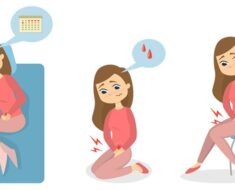
Learning how to meal prep can significantly aid in your weight loss and fitness goals.
Meal prepping helps you make healthier, smarter decisions when it comes to what foods you eat and in what quantities.
No wonder so many people are jumping on board.
What is Meal Prepping?
Meal prepping is when you prepare some, or all, of your meals ahead of time. Think of it as the healthier, homemade version of TV dinners.
Meal prepping is perfect for anyone looking to:
- Eat healthier
- Consume healthy portions to prevent weight gain
- Reach for healthy food options instead of processed and fast foods
- Spend less time cooking *and cleaning* every day (which saves you tons of time each week!)
- Save some money on groceries
If your ears perked up to any of those reasons, meal prepping may just become your new best friend.
You can meal prep just about anything, including:
- Breakfast
- Lunch
- Dinner
- Snacks
So any meal, really.
And the best part? It’s all homemade, so you know exactly what is going into the food you’re consuming.
How to Meal Prep
When it comes to meal prepping, there are a few (4) important steps you need to follow to make it as efficient and worthwhile as possible.
1. Choose a Day
The very first step to a successful meal prep is choosing a day when you’ll buy groceries and prepare your meals. You don’t have to do them on the same day, you just have to decide when you will do them.
A very common day to meal prep is on Sunday, as it’s the end of the weekend and start of the new week. However, the day you choose should fit your schedule and needs.
If you are meal prepping a lot of meals, it might be best to split up the cooking between two days.
Choosing to prep on Sunday and Wednesday allows you to split up the workload evenly. This also means your food will taste better since you’re making fresh meals on Sunday and more fresh meals on Wednesday (or whatever days you choose).
In order to stay on track with meal prepping, you have to be realistic and not set yourself up for failure.
Chances are this is new to you, so it might be best if you start by meal prepping one meal. Once you get the hang of things, you can branch out and prep more meals.
What’s important is that you don’t set yourself up for failure right away.
2. Pick Your Meals & Make a List
Once you’ve decided on your grocery haul and meal prepping days, you can start picking your meals.
There are a few factors to consider when choosing what to make.
While you’re going through these steps, make sure to write down the number of meals, what you want them to be, and craft a grocery list along the way. You don’t want to forget anything and have to make another trip to the store.
Number of Meals
There are two parts to this.
You first need to determine which meals you want to meal prep.
Is it:
- Breakfast?
- Lunch?
- Dinner?
- Snacks?
Or are there multiple meals you need to prepare?
Then, you have to figure out the quantity of each meal you have to make.
So for example, let’s say I want to meal prep my lunch and snacks for Monday through Friday so I don’t eat out during the day. I then need 5 meals for lunch and 5 for snacks. It’s as simple as that.
What you choose to meal prep is based on whatever will help you succeed in your health and fitness goals.
A lot of people actually meal prep lunch, dinner, and snacks, which can seem daunting. But when you realize you always have a healthy meal on-hand, it’s definitely worth it.
Simple Items
When choosing recipes or just figuring out what you want to make, it’s best to choose simple items.
Otherwise, you’ll spend way more time preparing and cooking your meals, which adds up when you’re doing it all in one day.
More complex meals also tend to not reheat well, so sticking to simple foods like chicken, rice, and broccoli make for a better meal 3 days later. They’re also cheaper to buy, if that’s a factor you need to take into account.
Some common staple items to choose from are:
- Protein: Chicken breast, lean ground beef, lean ground turkey, pork chops, lean lunch meats, beans, lentils, hard boiled eggs.
- Carbs: Couscous, oats, quinoa, rice (brown, wild), whole grain bread or tortillas, whole wheat pasta.
- Healthy fats: Almonds, avocados, cashews, nut butters (peanut, almond, etc.), pecans, pistachios, pumpkin seeds, walnuts.
- Fruits & vegetables: Apples, blueberries, bananas, broccoli, carrots, cauliflower (mashed, riced), celery, corn, green beans, kale, peas, spinach, strawberries.
- Snacks: Fruit, vegetables, yogurt, granola, nuts.
I know a lot of these foods sound boring, but there’s a simple way to liven things up. It’s called seasoning, and it will be your best friend.
You DO NOT have to eat plain, unseasoned chicken with rice and broccoli every day. I know if I did that, I wouldn’t even last a day. So make sure to include things like garlic, onion, pepper, and maybe even some chili powder or paprika for some spice.
Macros
Macros, or macronutrients, are carbohydrates, fat, and protein, which are all nutrients the body needs in large (macro) quantities. These nutrients are supplemented through our diets, and it’s important enough of them are consumed each day – but not too much.
Otherwise, overconsumption leads to weight gain, and that’s something we’re trying to avoid here.
If you track your macros, it’s important to pick meals that will fulfill your daily macro goals. And if your macros are different on workout days versus rest days, make sure you account for that with your groceries and meals.
Otherwise, you can disregard this step and move on to grocery shopping.
3. Go Grocery Shopping
After you’ve made your grocery list, it’s time to go shopping.
It’s important to make sure you’ve included everything you need on your grocery list. There’s nothing worse than forgetting an important ingredient and having to make another trip to the store.
Since you’ll most likely be buying items in large quantities, shopping at Costco might help you save money. You might not even have to go grocery shopping as often if you stock up on items like chicken breasts, olive oil, frozen fruit, eggs, and other items that last a while.
4. Prepare Your Meals

Obviously the next step is preparing your meals on the day you choose.
To make multitasking easier, I highly suggest cooking your meat in a crockpot or the oven. This way, you can focus on preparing your carbohydrates, healthy fats, and fruit and vegetables without worrying about overcooking your meat.
But before you can prepare your meals, you need to have proper storage for all of them.
Meal Prep Storage Ideas
Believe it or not, there is some serious criteria for finding the perfect meal prep storage containers.
You want something that is:
- Leak-proof
- Air-tight
- Easy to clean
- Durable
- Stackable
- Freezer friendly
- Portable
- Clear
- Free of harmful toxins and chemicals
- Not too pricey
And finding all of that, especially for cheap, is difficult.
Now I’ve done the hard work for you by sorting through what’s worth your money and isn’t and broke it down into 2 separate categories: glass and plastic.
Glass Meal Prep Containers
Glass is by far the superior food storage container. End of story.
You can see your meals clearly, they don’t leave your food tasting funky, and they’re higher quality than plastic.
And unlike plastic, glass containers don’t melt or acquire stains.
Perhaps most importantly, glass storage containers don’t contain any chemicals or toxins and can be used in the microwave and dishwasher.
So if your budget allows, I highly recommend these glass meal prep containers.




Plastic Meal Prep Containers
If you’re looking for something a little more budget friendly, plastic containers will get the job done.
However, you don’t want to buy just any plastic meal prep containers.
They should be:
- BPA free
- Microwave safe
- Dishwasher safe
- Freezer safe
- Stackable
- Reusable
You shouldn’t be too cheap when choosing a plastic food container, as cheap products contain harmful chemicals that are absorbed by your food when it’s heated up.
With that being said, these are the safest plastic containers you can get for the money. But if you can, I strongly suggest opting for the glass containers.

POPIT FOOD STORAGE
SNAPWARE STORAGE 3 CUP
Cooler or Lunch Bag
If you’re taking your meals anywhere, like to work or school, you need a cooler or lunch bag of some sort.
These lunch bags are actually pretty spacious, allowing plenty room for several meal prep containers.




Don’t Forget Your Water!
One last thing to help you reach your health goals is to drink water!
Sedentary men and women should drink at least 104 ounces and 72 ounces of water per day, respectively. If you’re active or in a weight loss program, you should aim for an even higher daily water consumption goal.
I personally LOVE water more than any other drink in this world. I’ve found that I drink even more water using a Hydro Flask because I NEVER have warm water when I use it!
It’s a vacuum insulated water bottle, similar to a Yeti, and it keeps your water cold for 24 hours.
Reusable bottles are cheaper and better for the environment, so I highly suggest you invest in one, more specifically the Hydro Flask.
And that’s all there is to a successful meal prep to help you smash your health and fitness goals!












